Introduction
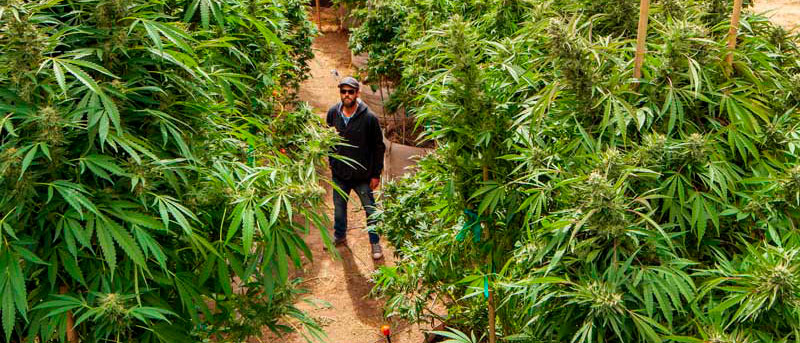
You can grow big cannabis plants like this at home. Big containers are expensive to fill with soil but offer perfect soil when native soil is lacking. Choosing the proper varieties (strains) of cannabis and regular maintenance will be rewarded with a heavy harvest.
Understanding the basics of cannabis botany will improve your gardening skills and help you become a savvy consumer. It will give you a background on the species of Cannabis Sativa L. and different subspecies, C. indica and C. Ruderalis. This is the way cannabis is classified botanically. Cannabis sativa and subspecies C. indica and C. ruderalis have many similar traits, including taste, fragrance, and effect.
This chapter gives a basic overview of the botanic classification, including basic nomenclature and physical aspects –growth habit, branching, root mass, etc. The geographic origin of these species sheds light on how they evolved and are used today. Simple genetic qualities differentiate CBD-rich, THC-rich, and industrial fiber and seed varieties.
Terpenes give cannabis distinctive fragrances and tastes. Feminized cannabis is also examined.
Botanical Classification
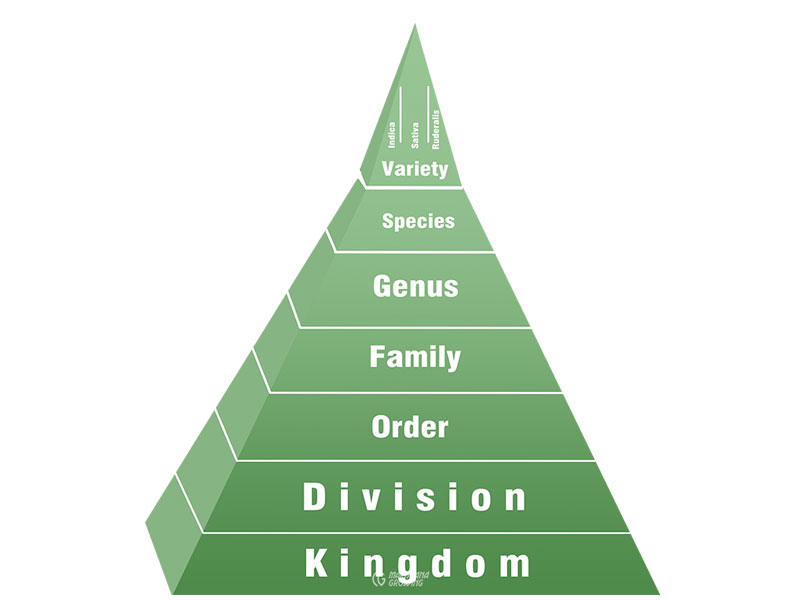
Cannabis is a member of the Plant Kingdom. Botanists classify the Plant Kingdom into categories based on qualities found within the plant. Cannabis, botanically speaking, is classified as follows:
Kingdom: Plantae—all plants
Division: Magnoliopsida—magnolia class
Order: Rosales—nine families
Family: Cannabaceae family
Genus: Cannabis L.
Species: Cannabis sativa L.
Subspecies: Cannabis sativa / Cannabis indica / Cannabis ruderalis
Note
The term “strain” is often used incorrectly to describe “varieties.” Strain is the term used to classify fungi, bacteria, and viruses. For example, there are different strains of the Coronavirus.
Here is an easy way to remember these botanical terms:
genus = last name
species = first name
variety = nickname
Cannabis genus and species are lumped together by laws imposed by governments. All cannabis is classified as Cannabis sativa (C. sativa) under international law. Within this species, it is additionally classified as: Cannabis sativa (= C. sativa var. sativa), Cannabis indica (= C. sativa var. indica), Cannabis ruderalis (= C. sativa var. spontanea). The good news is that cannabis laws are changing!
In the seventies, a new classification was proposed, breaking down cannabis into chemotypes:
Type I: THC dominant
Type II: Balanced THC:CBD ratio
Type III: CBD dominant with low concentrations of THC and/or CBG
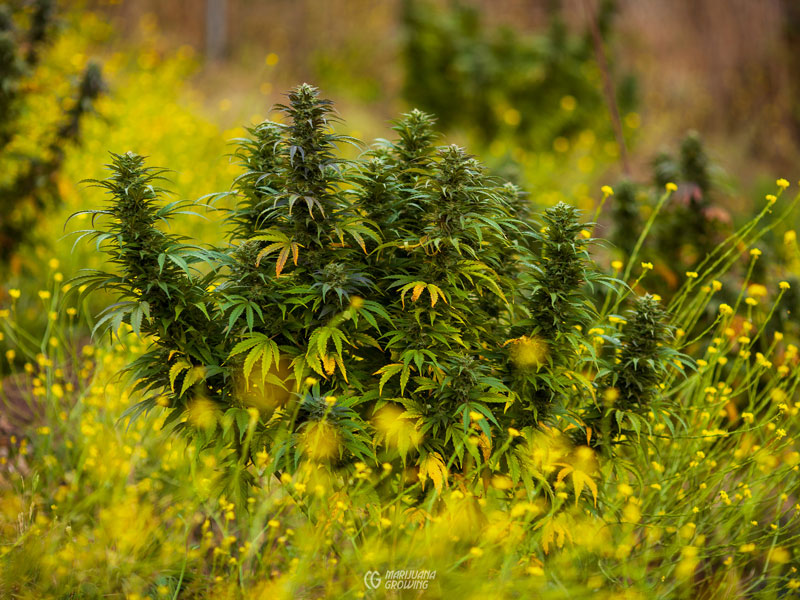
Landrace cannabis plants grow in the same area for years. The genes of the male and female plants mix over the years. The resulting generations have consistent, stable genes that adapt the stand of cannabis plants to the localized climate and growing conditions.
Landrace cannabis is a term that is bounced around freely as a buzzword among many cannabis aficionados. Landrace cannabis plants are localized domesticated species that have adapted over time to the natural and cultural environment in which they live. Landrace cannabis differs from cultivars bred selectively to conform to a specific criterion.
Cannabis is distinguished by a combination of qualities that set it apart from all other plants in the Plant Kingdom. The first five points below include general cultural aspects. These are essential points to understand to grow cannabis. The last two points include medicinal and recreational aspects. Fragrance, taste, and cannabinoid profile are the main reasons we grow cannabis.
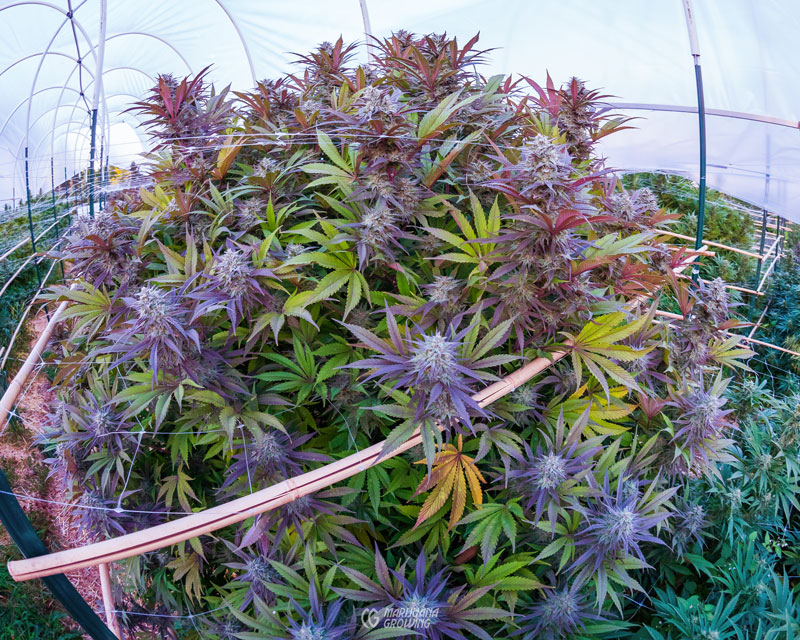
Annual flowering herb completes its life cycle in one year. In nature, all cannabis germinates, grows, flowers, and produces seeds in less than one year. Annual flowering plants include an exhaustive list of annual flowers, vegetables, and weeds. This StinkBud plant is nearing the end of the flowering cycle.
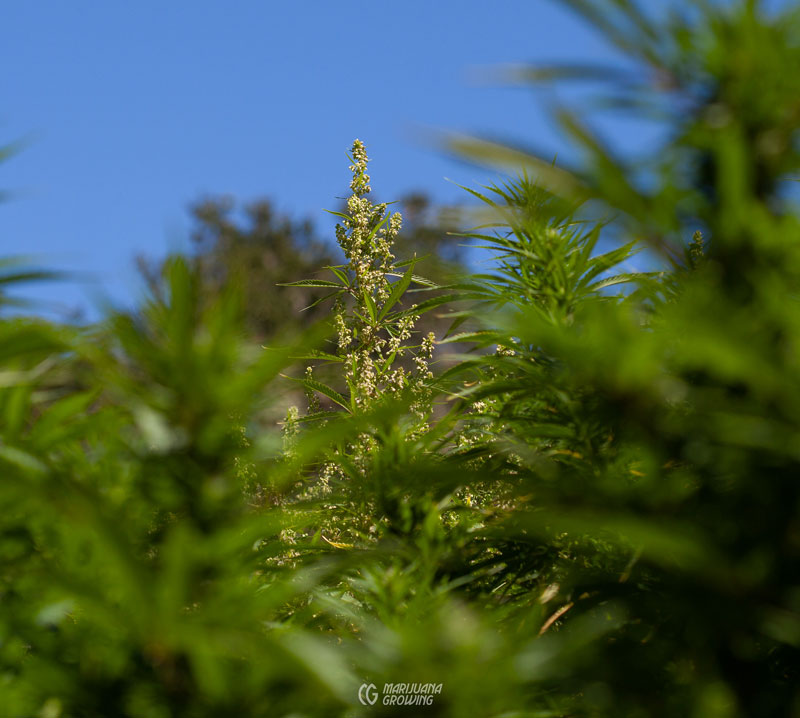
Wind pollinated. The wind carries microscopic grains of pollen produced by male plants for great distances. Male plants do not rely upon insects, birds, or mammals to transport pollen to fertilize females. About 12 percent of flowering plants are wind pollinated.
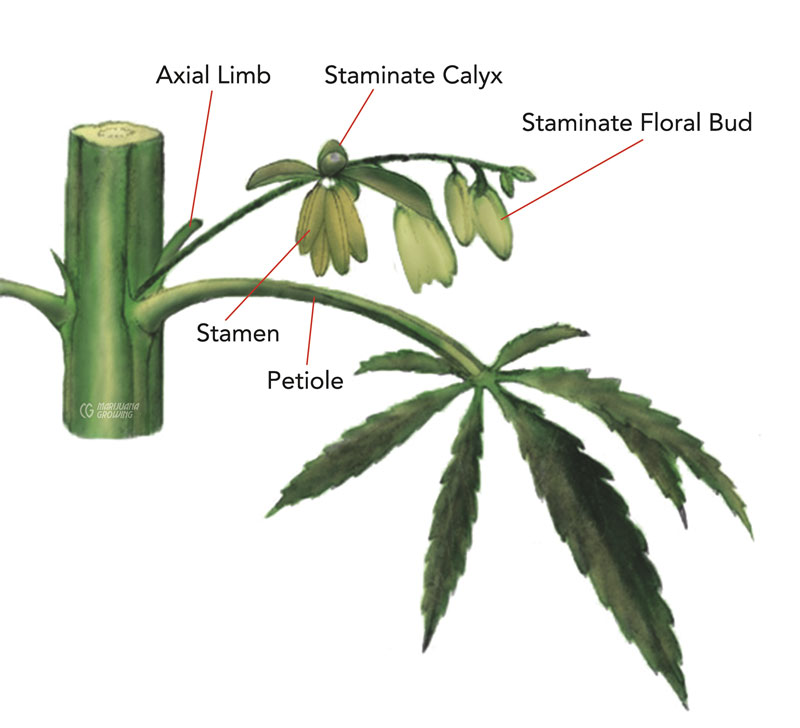
This botanical image of a male cannabis plant shows each flower part, including the location of the pollen in the male flower.
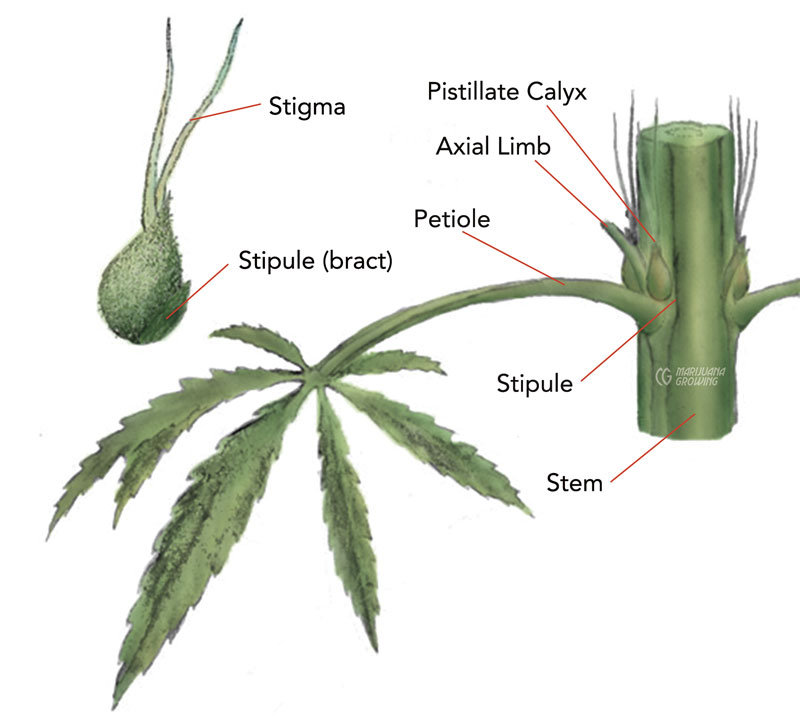
This botanical drawing of a female cannabis plant shows each flower part, including the location of the fertilized seed inside the seed bract.
Dioecious plant with imperfect (male and female) flowers on male and female plants. Female cannabis is most desirable because it contains about ten times more cannabinoids than male plants. Female plants also yield much more biomass than males. About 7 percent of flowering plants are dioecious.
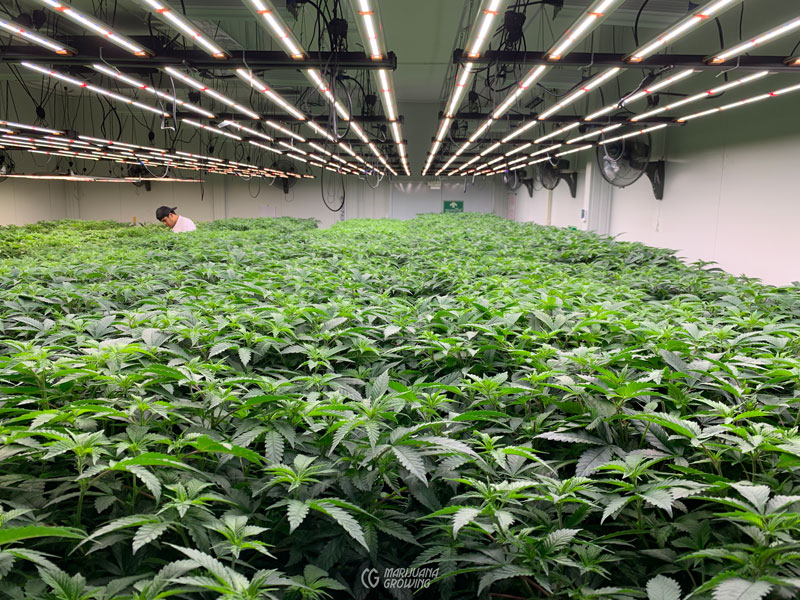
This vegetative cannabis garden in Thailand is under 18 hours of LED light and 6 hours of darkness. This light schedule ensures plants stay in the vegetative growth stage. My old friend from Spain, Jaime Carrion, set up this garden for the Golden Triangle Group Co., Ltd.
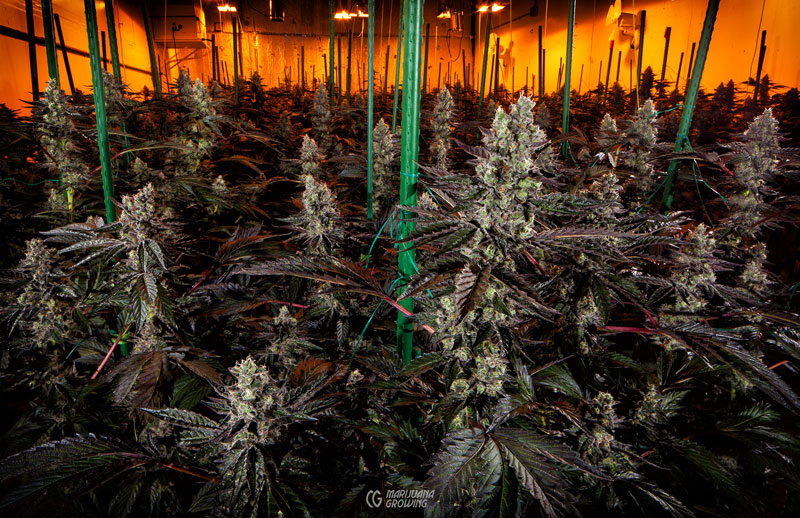
Short-day (long night), “AKA photoperiod,” cannabis blooms under long nights and short days. C. Sativa and C. Indica are in this category. These short-day plants are triggered to flower outdoors when the nights become long and days short. Indoor and greenhouse growers give regular cannabis 12 hours of darkness and 12 hours of light to ensure the flowering mechanism is triggered. Cannabis, Christmas cactus, chrysanthemum, cotton, poinsettias, rice, soybeans, and sorghum are examples of this relatively small category of short-day plants.
Note: Up to 13.5 hours of light and 10.5 hours of darkness will trigger flowering in many cannabis varieties.
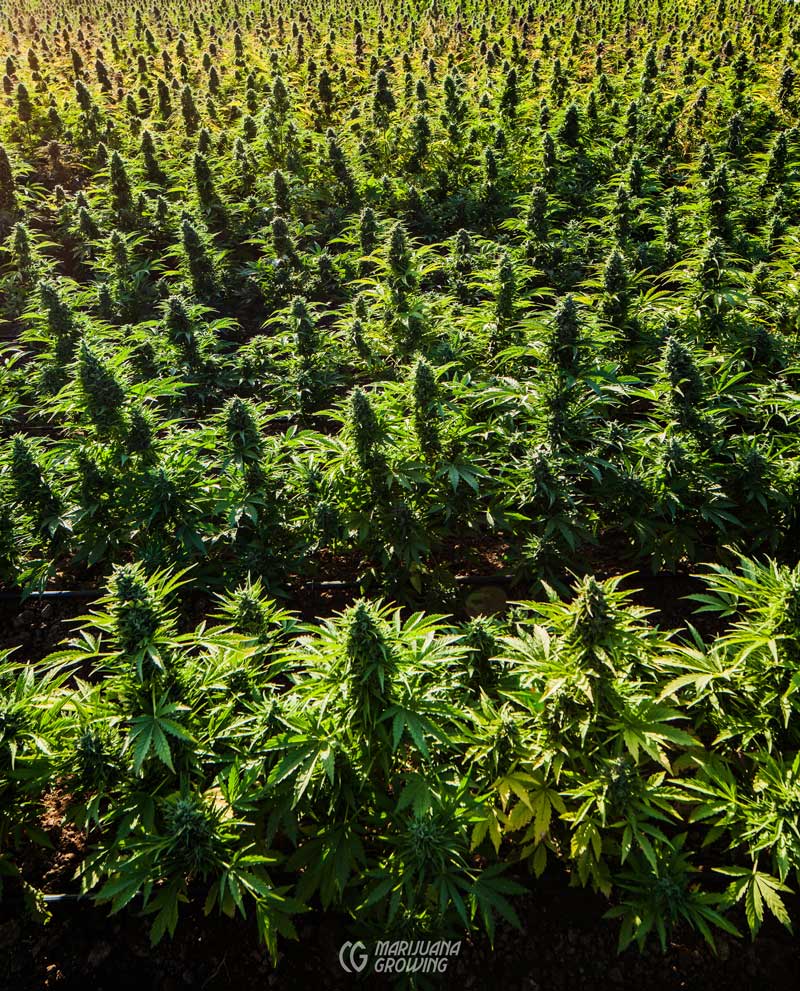
Day-neutral, AKA “auto-flower” C. ruderalis blooms and sets flowers regardless of hours of darkness and light. This day-neutral species flowers according to chronological age, typically after the fifth to seventh pair of internodes appear, about three weeks after germination. The vast majority of flowering plants are day-neutral.
Auto-flowering cannabis plants grow incredibly fast and are super productive in both short-season and long-season climates.

Cannabis produces naturally occurring terpenoids, organic compounds that provide cannabis with therapeutic aroma and flavor. More than 100 fragrance-imparting terpenes are present in cannabis. A short list includes myrcene (earthy), limonene (citrus), pinene (pine), betacaryophyllene (spicy-sweet), etc. Often referred to as “terps,”almost all plants produce terpenes. Terpenes are often collected from other plants and sold as infused (cannabis) terpenes. Much has been written about specific terpenes, there are many articles available on the internet.
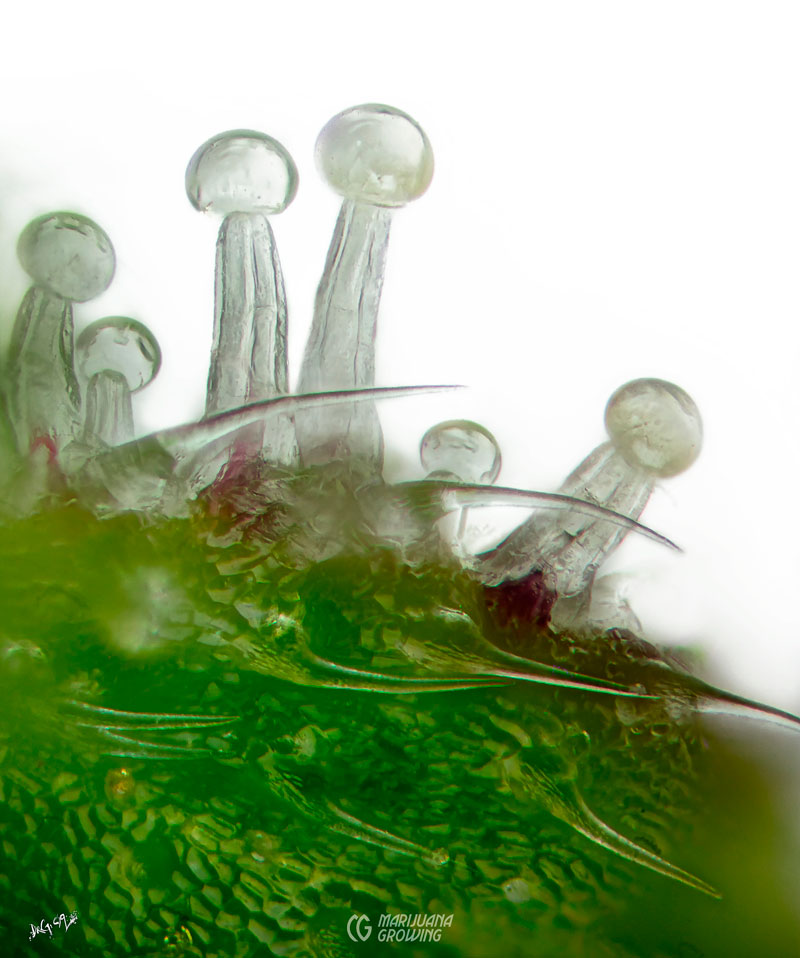
Cannabis produces naturally occurring cannabinoids. Naturally occurring phytocannabinoidsare produced by plants. Endocannabinoids are madeinside the bodies of humans and animals. Quite a fewplants produce a limited number of phytocannabinoidsthat will engage with at least one cannabis receptor(CB1 and CB2), including Echinacea (E. purpureaand E. angustifolia), Electric Daisy (Acmella oleracea),Helichrysum (Helium italicum) and cacao (Theobromacacao). Cannabis is the only plant with a completearray of more than 100 cannabinoids. The bulk ofcannabinoids, including THC, CBD, and CBG, areproduced and concentrated in glandular trichomesresin glands that appear on the foliage, primarily onfemale floral clusters.
Cannabinoids are the chemical compounds found in cannabis, including THC, CBD, CBG, etc. There are more than 110 different cannabinoids that have been isolated from cannabis.
Trichomes and Resin Glands
Cannabinoid-rich resin glands and other trichomes become visible during flowering with the naked eye. Use a 10 30X handheld lens to distinguish resin glands—bulbous, capitate-sessile, capitate-stalked, and non-glandular trichomes. The capitate-stalked glands cover flowers, seed bracts, and small bud leaves of the plant. Bulbous and sessile resin glands on the surfaces of all flowers, leaves, stalks, and branches. Recent studies show different ratios of cannabinoids in different trichome types. Sessile glands are most likely immature stalked trichomes. Furthermore, the terpene variation is much greater than bulbous glands.
Trichomes may have evolved as a defense mechanism for plants, according to one theory. Another theory is that a sticky, resinous surface attracts more pollen from wind-pollinated cannabis. Trichomes are said to form a protective layer against diseases and pests that prevents them from reaching and penetrating the surface of the plant. Some trichomes can inhibit the growth of a few types of fungus. The chemicals in the trichomes make cannabis less appetizing to animals by secreting a bitter substance and distasteful aroma.
The protective trichomes may also help insulate plants from temperature extremes, excessive water loss caused by wind, and low humidity and protect from excessive moisture. They also form a natural “sunscreen” to shield against ultraviolet light rays.
Trichomes are little appendages that grow on all plants. For example, foliage hairs are trichomes. Trichomes differ immensely. Some are glandular, with a stalk and a glandular head. Others are non-glandular, elongated, and tapered. The term “trichome” that describes “capitate-stalked resin glands that contain the bulk of desirable cannabinoids” is only partially correct. It is similar to describing all roses as “flowers.” All roses are flowers, but not all flowers are roses.
Trichome types

Sessile and cystolith glands, AKA plant hairs, are common on many plants. In fact, sessile glands are most likely immature stalked trichomes. These trichomes have a pointed tip and are often long and hair-like. The waxy protective trichomes are most common on leaf undersides, petioles and stems. They are trichomes with pointed tips that help protect cannabis from diseases and pests.
Most abundant on outdoor plants, sessile and cystolith trichomes are more common on some varieties than others. More of these trichomes form on plants when they harden-off and are moved from indoors to outdoors. The trichomes (glands) exude insecticidal, and miticidal substances repel them, but they contain no useful cannabinoids.
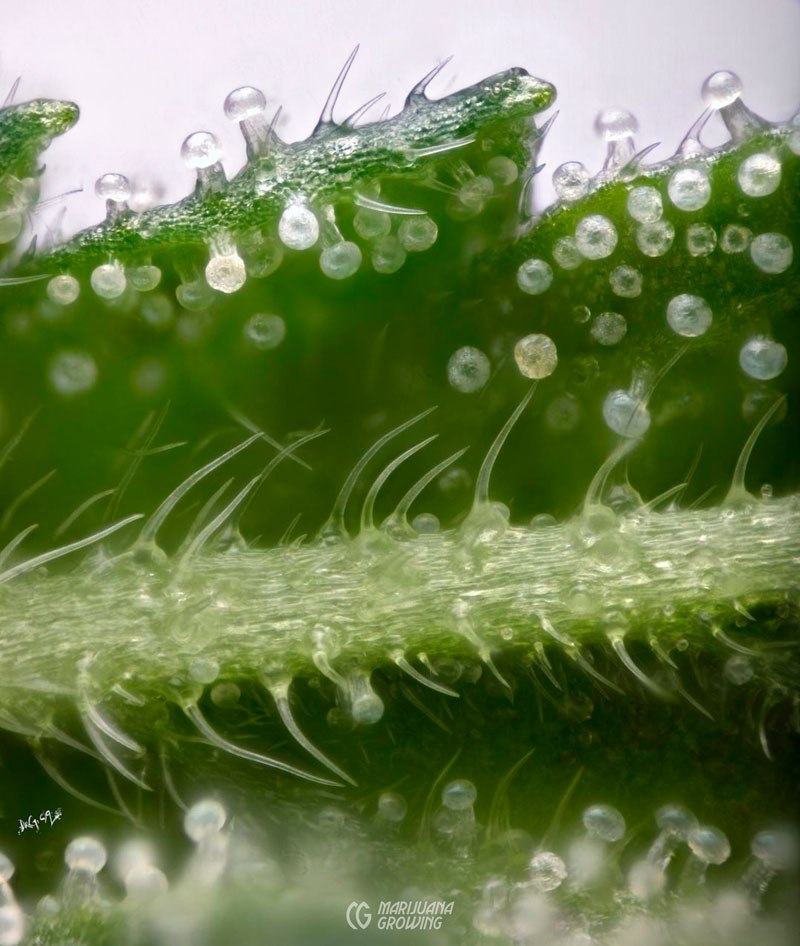
If you look closely at small leaves, you can see little balls of resin sticking directly to the foliage. Each of these balls has a foot that will grow as the glands grow and accumulate cannabinoids.
Bulbous glands are the smallest trichomes and barely visible with the naked eye, ranging in size from 15 to 30 micrometers. One to 4 cells constitute the “foot” and “stalk,” and 1 to 4 cells make up the “head” of the gland. Head cells secrete a resin, believed to be cannabinoidrich, along with related compounds that accumulate between the head cells and the cuticle. A nipple-like bulge may form on the membrane from the pressure of built-up resin as these glands mature. Look for bulbous glands scattered about on foliage surfaces.

This image is spectacular, you can actually see the cells and the pink secretion in the translucent capitate-stalked resin glands.
Capitate-sessile resin glands develop before and during flowering growth. The bulb head measures 25 to 100 micrometers across the globular-shaped head or bulb. The bulb appears to lie flat on young and immature plants. The stalk elongates and grows during flowering to transform the capitate-sessile gland into a capitate-stalked resin gland. Glands accumulate progressively more resin that concentrates between the stalk and the bulbous head.
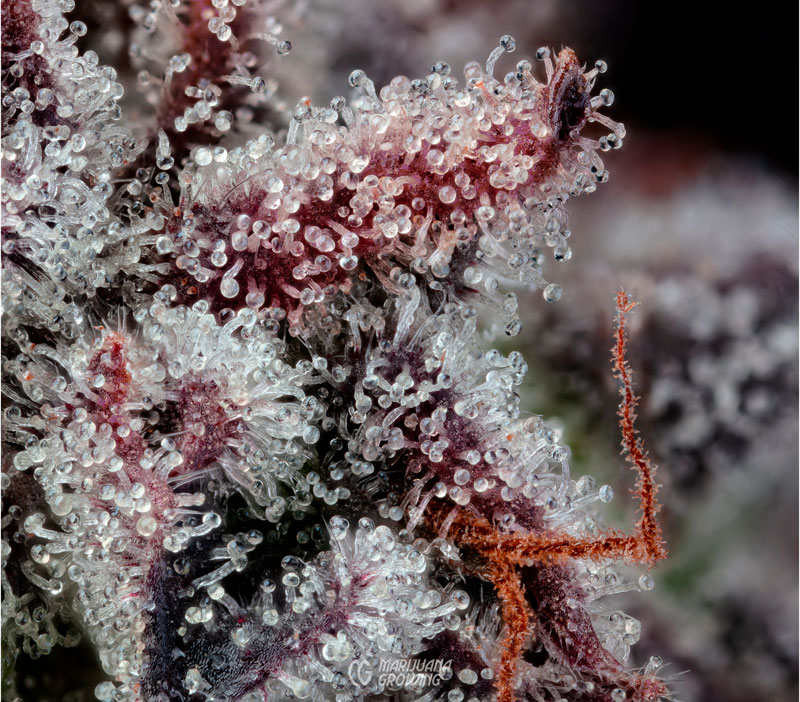
Capitate-stalked resin glands are covering this flower so completely that foliage is obscured.
Capitate-stalked resin glands (trichomes) appear and become visible to the naked eye when flowers form. Look for them on female flower bracts and new flower growth and surrounding foliage where they form heavily on the plant. The resin glands also tend to accumulate heavily on veins of lower leaf surfaces around flowers. They also accumulate on somewhat larger leaves and petioles. Cannabinoid-potent varieties typically contain higher concentrations of capitate-stalked resin glands. Use a 30X handheld microscope to see close-up.
Capitate-stalked resin glands hold the bulk of CBG, CBD, and THC. These resin glands consist of a stalk with a spherical, bulb-like head on top. They look like a post with a knob, ball, or bulb at the top. They form mainly on flowers and small leaves. The highest concentration of cannabinoids is located at the base of the bulbous resin head.
A 10-30X handheld lens or microscope will help you examine capitate-stalked resin glands closely to determine peak CBG, CBD, and THC content. Check flowers every day starting the sixth week of flowering. Check several flowers from different plants to ensure the maximum amount of capitate-stalked resin glands are ripe for harvest.
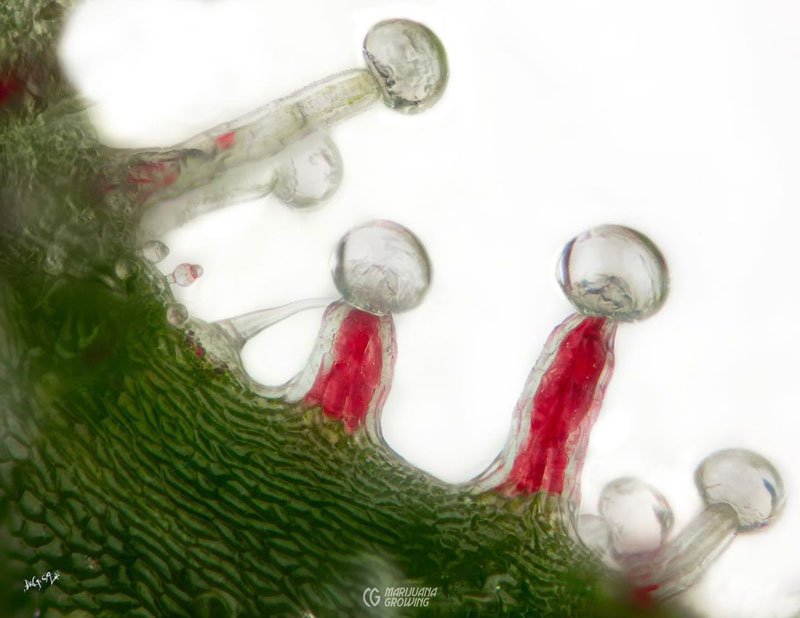
Images like this show every detail of the capitate-stalked resin glands. We are still figuring out why two of the stems are full of a red substance.

Capitate-stalked resin glands are full of chemical activity. This is where the majority of cannabinoids occur. Disc cells and principally the secretory cavity of the gland perform a key role in the physiology of secondary products. In the above illustration, disc cells are shown attached to foliage by stipe cells (red) and basal cells (green). The plastid (orange) in disc cells secrete lipoblasts where they synthesize lipophilic substances that accumulate and ultimately migrate and form BLUE vesicles. THC occurs in the top of the capitate-stalked resin gland.
Male plants and flowers have much lower concentrations of less cannabinoid-potent capitatestalked resin glands than found on female plants.
Older leaves contain few cannabinoids unless clearly visible on leaf surfaces. Leaves around flowers are much more densely populated with capitatestalked resin glands rich in cannabinoids.
Cannabinoid Profile
Many cannabinoids, not just THC, have unique effects on brain functions, which in turn cause different effects on human cognition and psychiatric symptoms. Different levels of cannabinoids relative to one another produce different effects. As a result, measuring the “potency” of cannabis plants is problematic.
A very resinous plant could have low levels of THC and high levels of CBD. Or a plant with little resin could contain high levels of THC and low levels of CBD. Cannabinoid profile depends on the makeup of cannabinoids and other active ingredients. For example, resin consists of cannabinoids and other molecules such as phenolic and terpenoid polymers, glycerides and triterpenes. When resin is concentrated in kief or hashish, about a third is water-soluble plant material, another third is non-psychoactive resins and the remaining fraction are cannabinoids.
In many cannabis plants, THC may be only a very small percentage of the total cannabinoids. The remainder (5-10%) of the resin will be oils, sterols, fatty acids, and various hydrocarbons common to plants.
About 80-90% of the cannabinoids are synthesized and stored in microscopic resin glands that appear on the outer surfaces of all plant parts except the root and seed. The arrangement and number (concentration) of resin glands vary somewhat with the particular variety examined. Marijuana varieties generally have more resin glands, and they are larger than resin glands in non-drug varieties.
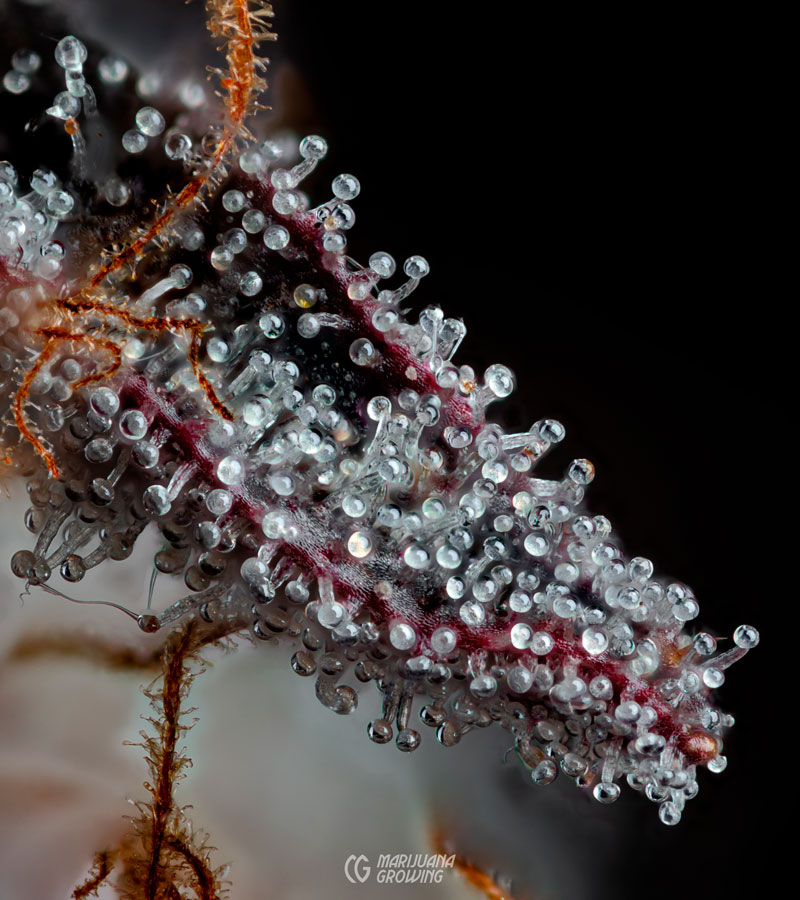
I’m always amazed when I see a small leaf covered with so many resin glands. It is like a magician magically made them appear. Transparent resin glands show CBGA early cannabinoid synthesis. As they progress to a milky color, a combination of CBGA and THCA are present. Amber resin glands signify a combination of THCA and THC.
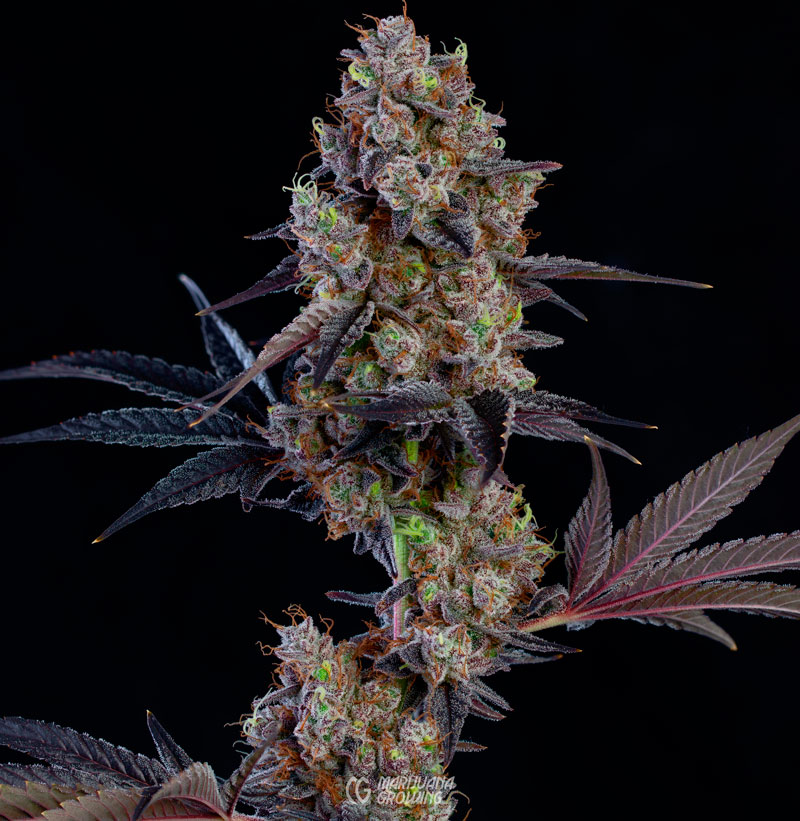
GMO is the name of this THC-rich flower.
Resins occasionally secrete through pores in the membrane of gland heads when they are knocked around. Usually, secretion occurs many weeks after stalked glands appear. The glands seem to empty their contents, leaving hollow spaces (vacuoles) in the stalk and head cells. After secretion, the glands cease to function and begin to degenerate. Gland heads, stalks, and trichomes become clumped together, and the whole flowering surface becomes a sticky mass. Mechanical stress from manicuring and fondling flowers will knock off the round head on top of the stock.
Small quantities of cannabinoids are present in the internal tissues of the plant. The bulk is found in small single cells that elongate to form small, individual resin canals. Other plant cells contain insignificant amounts of cannabinoids, and probably a good 90% of the cannabinoids are localized in the resin glands.
Terpenes are lightweight and belong to a large group of unsaturated hydrocarbons, several of which can be extracted with steam distillation. The product holds aroma, flavor, and specific character.
Five mono- and sesqui-terpenes, including alpha-and beta-pinene, limonene, myrcene, and beta-phellandrene, impart virtually all of the sweet, unique, minty, citrusy, etc., qualities found in odorless cannabinoids. The volatile terpenes enter the atmosphere and dissipate over time. This causes cannabis to lose much of its bouquet and flavor when stored.
Terpenes constitute 1-3% of the dry weight of a fresh cannabis sample—about 10% of the weight of the cannabinoids. For every 1,000 grams of dry flower, from 1 to 3 grams of terpenes can be extracted.
Cannabis Varieties (AKA Strains)
Each variety has distinct characteristics, including, growth habits, cultural preferences, fragrance, taste, and cannabinoid profile. When you see cannabis advertised, they are referencing different varieties such as ´Skunk,´ ´Hash Plant´, and ´Durban Poison.´ There are an infinite number of cannabis varieties. But not all varieties are created equally. Each variety of cannabis has distinct dominant and recessive traits. Breeders do their best to encourage dominant traits from Cannabis sativa, C. indica and C. ruderalis. However, recessive traits will show in one of four plants in the F2 generation. Different species are crossed with one another. They select for desirable qualities in the offspring. Desirable characteristics include cannabinoid profile (CBD, THC, CBG, etc.), genetic stability, growth habit, disease and pest resistance, climate tolerance, etc. Due to the illegal nature and the booming underground worldwide drug cannabis market, most popular cannabis varieties have been developed solely for high THC content. Only in the last 15 years has there been an interest to develop CBD-potent varieties. More recently, university-educated breeders have developed stable CBD and CBG-rich cannabis varieties. Several agriculture-oriented businesses have started to breed for other characteristics – disease and pest resistance, climate tolerance, finite harvest times, etc.
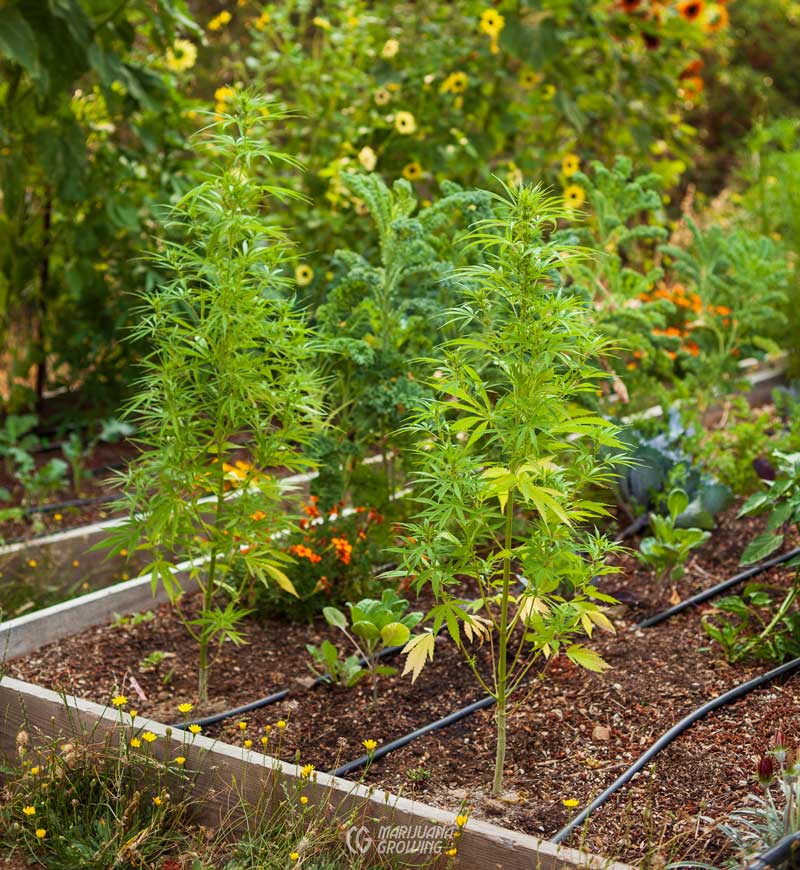
This backyard cannabis garden was recently transplanted. Large plants grown in containers were moved outdoors to get a good start on the growing season. Raised beds warm earlier in the year to add extra heat to promote growth.
Hobby medical cannabis gardeners grow varieties with different cannabinoid profiles. However, maintaining a consistent cannabinoid profile is difficult because most cannabis varieties are genetically unstable. The majority of “breeders” do not take the time to stabilize cultivars before selling seeds. They do not develop “true breeding” parents that are consistent. These true-breeding parents must be bred with one another to produce true F1 hybrid offspring.
Consequently, they are not able to produce true F1 hybrid seeds. But as a passable alternative, they sell F2 and F3 seeds that typically lack vigor. A quick look at the Galaxy on the Phylos Bioscience site will show you that almost all cannabis varieties available today are not stable. Study the Galaxy of more than several thousand varieties to see their commonalities and differences. You may notice that only a handful of the varieties are unique.
Cannabinoid levels change in relation to cultivation conditions. Cultivation inconsistencies between crops, often brought on by weather conditions, are another reason cannabinoid profiles fluctuate. If you are interested in breeding cannabis, please see the Breeding chapter in the Cannabis Encyclopedia by Jorge Cervantes, available in English only on Amazon worldwide.
Cannabis Sativa

Classic cannabis sativa leaves are thought to be long and thin. This plant is of Mexican origin and fits the criteria of cannabis sativa.
Cannabis sativa (= C. sativa var. sativa) originated predominately in warmer tropical climates of Asia, the Americas, and Africa. Each area of origin lends specific characteristics, but all sativas share similar traits: plants are tall, sometimes leggy in stature, with more distance between internodes than C. indica; a large sprawling root system, large narrow-bladed leaves; and somewhat sparse flowers. This is compounded when grown indoors under low light conditions. Female flowers start at branch nodes and typically develop along the length of the stem and branches rather than clustering around branch nodes. Flower formation is slower and less dense, allowing more air circulation within the foliage, a trait that helps prevent fungal attacks.
Recreational THC-dominant C. sativa typically causes an energetic, cerebral, and inspiring effect, often followed by a desire to eat (especially sweet items)—aka “the munchies.” Craving food is especially important for patients who suffer from nausea or lack of appetite while undergoing chemotherapy, HIV/AIDS treatment, and other procedures.
Overall, sativa varieties bloom later than indica varieties. While good producers outdoors, often growing to 15 feet (4.6 m) or taller, in an enclosed garden pure sativa varieties typically grow too tall too fast to be practical for garden room and greenhouse cultivation.
Central African sativas, including THC- potent ‘Congolese’, grow similarly to some Colombian varieties with tall leggy stature, often growing to more than 15 feet tall (4.6 m) with loosely packed flowers.
South Africa has major seaports. Sailors brought C. sativa from many different genetic profiles and planted them. Consequently, the potency of South African cannabis can be very high or very low, and it can be short, tall, leggy, bushy, etc. The famous ‘Durban Poison’ yields pale-green, potent early flowers and is the bestknown South African variety.
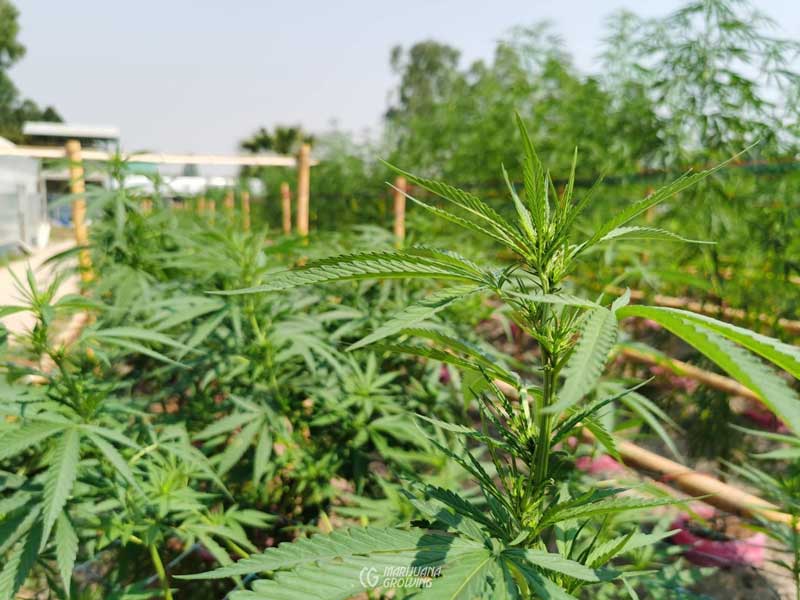
These sativas are growing in Asia at Thailand Organic Cannabis farms. They have a podcast on YouTube, “The Perfect High”. Cannabis will be legal in Thailand in 2022.
Asian sativas, including Thai, Vietnamese, Laotian, Cambodian and Nepalese, have diverse growth characteristics and vary significantly in potency. While Thai and other sativas from the area are often very potent, they are some of the most difficult to grow indoors and the slowest to mature. Thai varieties produce light, wispy flowers after flowering for about four months on plants with large, sprawling branches. Thai, Vietnamese, Cambodian, and Laotian sativas are more prone to grow into hermaphroditic adults.
Nepalese sativas can grow oversized leaves on tall, leggy plants that produce sparse, late-blooming flowers, but other varieties from this region develop into short, compact plants that bloom earlier. THC production and potency are often quite high but can also be second-rate.
Mexican, Colombian, Thai, and Jamaican varieties can be very potent, with a high THC:CBD ratio that produces a soaring, energetic, “speedy” high. But potency can also be minimal, with low levels of THC. Most of the exported Colombian cannabis available on the open market is of mediocre quality, even though some of the best cannabis I have consumed over the years came from Colombia.
Cannabis is poorly treated in many regions of the world. It is grown under adverse conditions and abused when dried and packaged. This ill-treatment causes more rapid degradation of THC and other cannabinoids. When these imported products arrive, they are a basic representation of the original plant. Consequently, seeds from fair smoke are often more potent than the parent.
C. sativas and C. indicas are crossed with one another to develop desirable traits of both types of plants. Most of the crosses you see on the seed market are crosses of C. sativa and C. indica.
Cannabis Indica
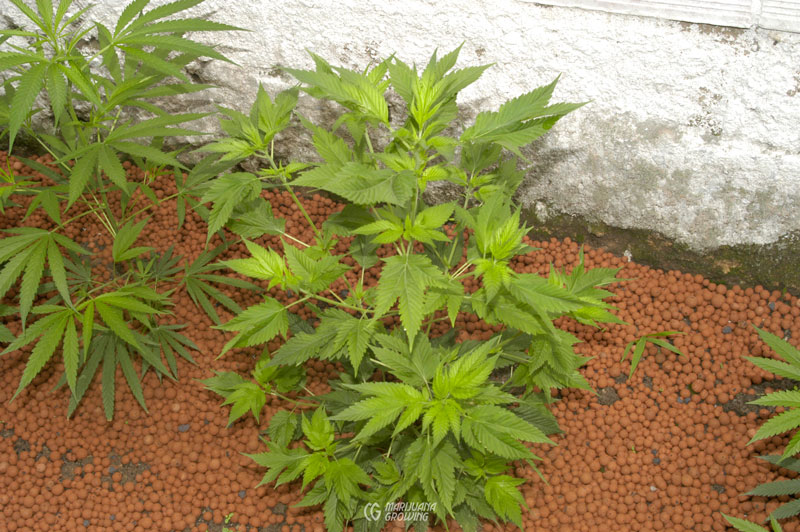
Cannabis indica is known for being short with broad leaves and heavy foliage including flowers. This image of a little plant was simply called La Indica.
Cannabis indica (= C. sativa var. indica) probably originated in the Asian subcontinent and maybe in present-day Afghanistan. C. indica is popular among indoor, outdoor, and greenhouse gardeners and breeders for its squat, bushy growth; condensed root system; thick stout stems; broad leaves with wide blades; and dense, THC-laden, fat, heavy flowers. Typically, indicas grow a maximum of 6.5 feet (1.9 m) tall and produce more side branches than sativas do. Typically, foliage is very dark green and in some varieties, leaves around flowers turn reddish to purple. Short, whitish stigmas may turn reddish to purple under natural sunlight. Flower formation starts around branch nodes, and thick clusters of buds develop. Dry flower weight is typically much heavier for indicas than sativas.
Indica-dominant varieties are very popular because they naturally flower early and the trait is easy to select.
C. indica tends to produce more corporeal effects, often described as a more physical, relaxing, and even incapacitating “couch-lock” effect. Side effects such as dry mouth may also occur.
Some indicas have a distinctive odor similar to that of a skunk or cat urine, while others smell sweet and exotic. Heavily resin-laden plants tend to be the most fungusand pest-resistant. Few indicas with heavy, dense, compact flowers are resistant to gray (bud) mold.
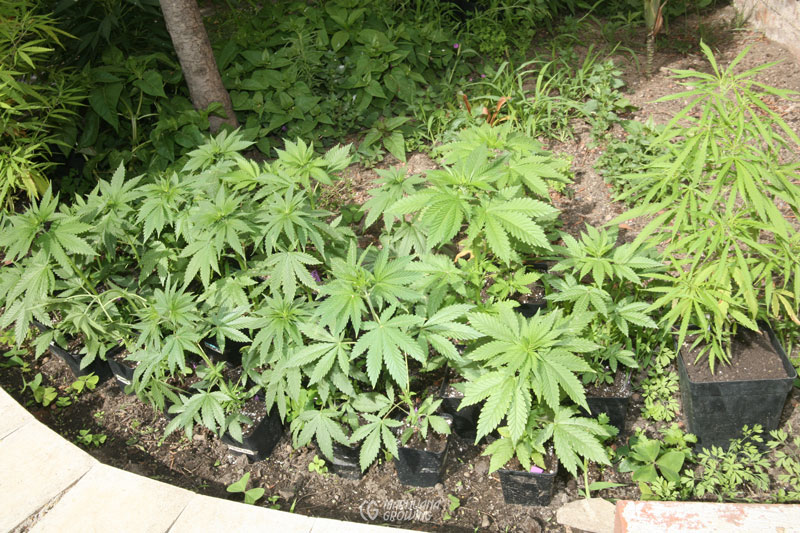
This small garden shows several different types of plants. The Afghani plants are in the center-right of the image. These plants are the ones with the broad leaves just to the left of the narrow-leaf sativa on the right.
Cannabis afghanica (= C. sativa var. afghanica) could be classified as a sub-species of C. indica. It originated near present-day Afghanistan. It is quite short, seldom reaching 6 feet (180 cm), with distinctive, broad, dark green leaflets and leaves. Dense branching and short internodes, most often with long leaf stems (petioles), dominate the profile of C. afghanica. The most common examples of pure C. afghanica include the many different hash plants and Afghani varieties. C. afghanica is cultivated exclusively for drugs with much of the resin being made into hashish. It is known for its high cannabinoid content. Many growers and breeders do not distinguish C. afghanica from C. indica, lumping them both into the C. indica category. ‘Hash Plant’, of which there are many, is one of the classic C. afghanica varieties.
Cannabis Ruderalis
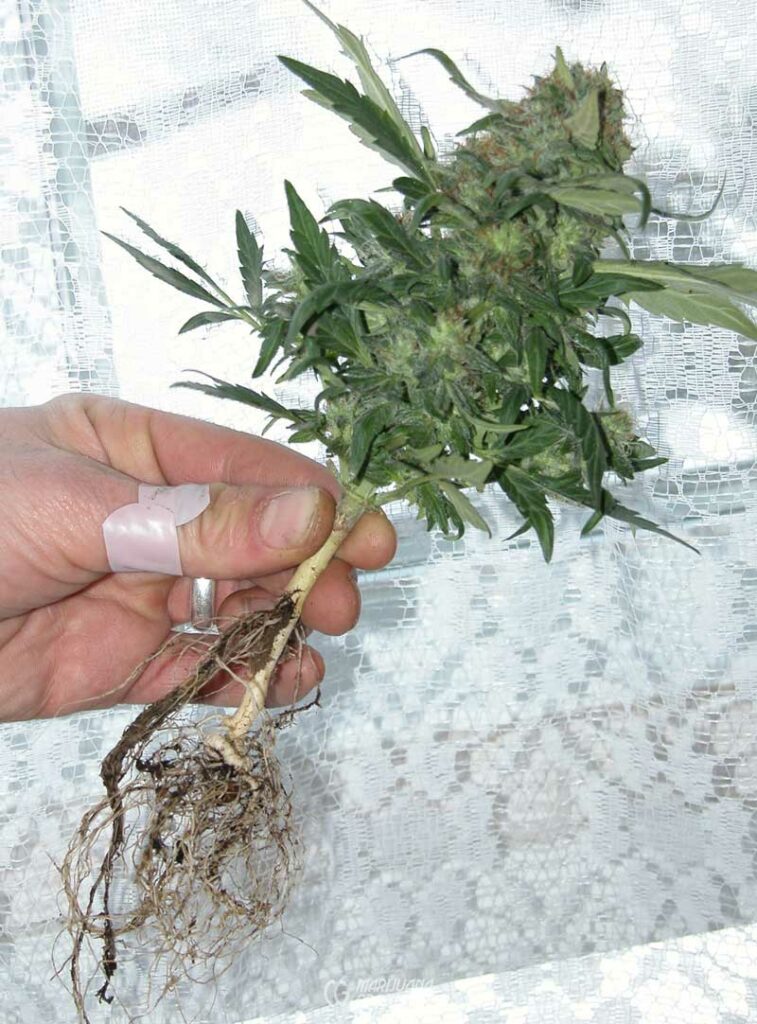
Cannabis ruderalis (= C. sativa var. ruderalis) (= C. sativa var. spontanea) is very short, from 1 to 2.5 feet (30–75 cm) tall at harvest, and has a weedy, scrubby growth habit. Branching is sparse and leaves have wide blades similar to C. indica but are often a somewhat lighter shade of green. Stems are thick and sturdy. Flowers are small and moderately dense. Root systems are adequate to support small plants.
Believed to be native to Asia, Central Europe and Russia, C. Ruderalis, is believed to have been disturbed by humans or natural occurrences. This tough little plant adapted to the harsh environments found in these short three-month-long growing seasons.
C. ruderalis varieties are crossed with C. sativa and C. indica varieties to incorporate the daylight-neutral gene. Breeders are hybridizing plants with the day-neutral gene(s) from C. ruderalis that incorporate qualities from C. sativa and C. indica: robust growth stature, large flowers, and CBD-rich and THC-rich cannabinoid profile. C ruderalis crosses available today usually flower 21 to 30 days after planting seeds. Mature plants are ready for harvest in 70 to 110 days regardless of the hours of darkness and daylight.
Feminized Cannabis
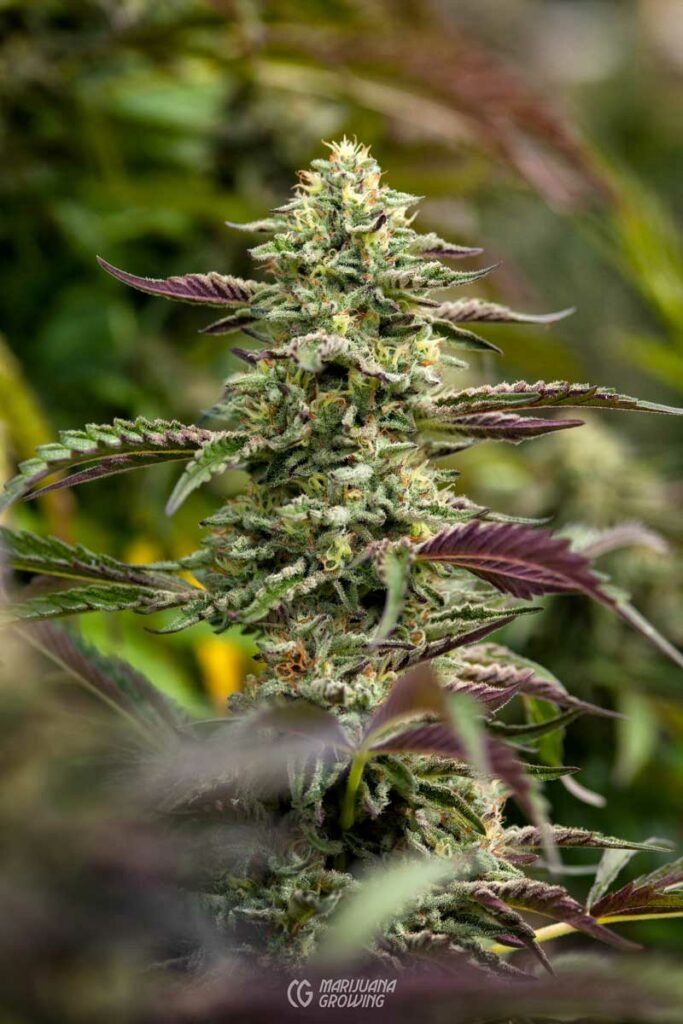
Feminized cannabis seeds that produce this Dutch Crunch plant have become very popular because they produce up to 99+ percent female plants. Female cannabis is more desirable because it produces more cannabinoid-laden resin and bigger flowers than male plants. Feminized cannabis seed that is not the product of truly stable plants will produce a higher percentage of male flowers on female plants. Less stable plants produce a higher percentage of male flowers. These plants are called intersex plants and are often referred to by the misnomer, “hermaphrodite.”
Before feminized plants became widely available, the only way to ensure female plants was to take stem cuttings, AKA clones, from a female plant.
Auto-flowering Feminized Cannabis
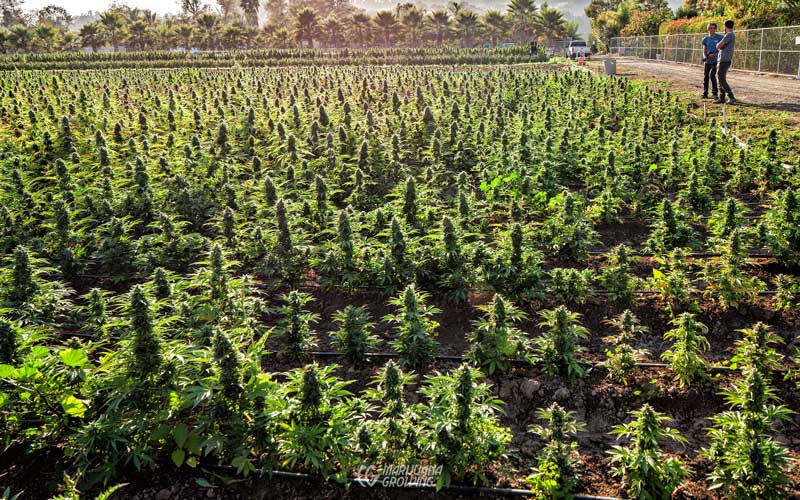
Auto-flowering (feminized) cannabis plants were originally popularized in the cannabis industry by the Joint Doctor, a lifelong dedicated cannabis gardener, and breeder. These varieties have almost all the characteristics of regular cannabis varieties, but they flower automatically, regardless of hours of darkness or light.
Auto-flowering plants contain day-neutral traits. This means they flower without a reduction in light. cannabis plants. The day-neutral trait replaces the short-day plant trait of flowering under short 12-hour nights and days. When the day-neutral trait dominates, cannabis flowers flower after 21-30 days of growth.
Auto-flowering cannabis is perfect for cool and cold climates with short growing seasons. Auto-flowering cannabis grows relatively well outdoors in alpine and northern climates having short summers with very long days and short nights. Long sunny days yield larger harvests. The plants can be started indoors and moved outdoors after they have sprouted. Protect little transplants at night and make sure the soil has warmed. Auto-flowering plants are generally resistant to colds, diseases, and pests. Outdoors in warm climates, gardeners can harvest 3-4 crops of autoflowering cannabis annually. Auto-flowering plants hold great promise for mechanized agriculture.
Sativa / Indica / Ruderalis Crosses
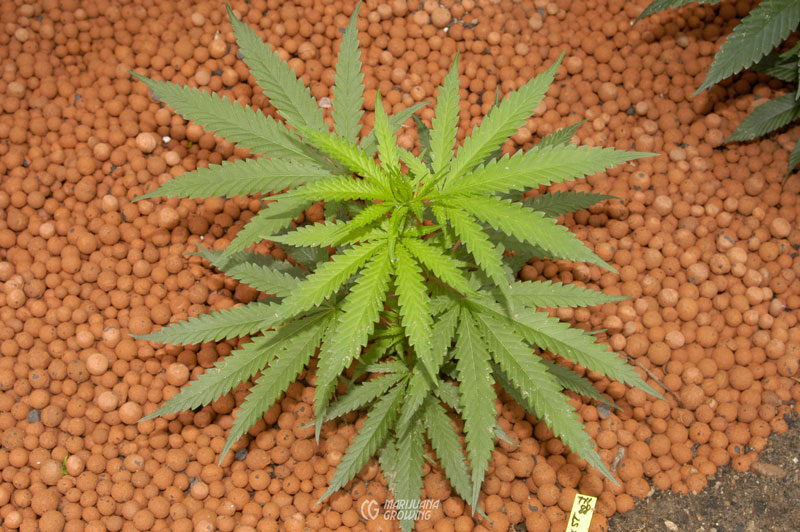
Day-neutral AKA auto-flowering, c. ruderalis crosses are becoming very popular among hobby growers and commercial farmers. C. ruderalis with dominant day-neutral genes are crossed with c. indica and c. sativa varieties. These crosses have advanced immensely during the past 10 years. New varieties are more productive and grow incredibly fast. The cannabinoid and terpene profiles also improved immensely. Dry flower yields have increased from a few grams per plant in the early days to more than 100 grams of dried flowers in some of today´s varieties. The cannabinoid and terpene profiles are improving by leaps and bounds too. To stay abreast of improvements in auto-flower varieties, check in regularly with internet newsgroups and social media posts.
Auto-flower plants typically have a small root system that requires less water than plants with a large root system. If the autos you are growing have a small root system they may be easy to over-water. Just because plants alongside may need water, but the auto-flowesr do not. Always check the container to actually see if water is needed.
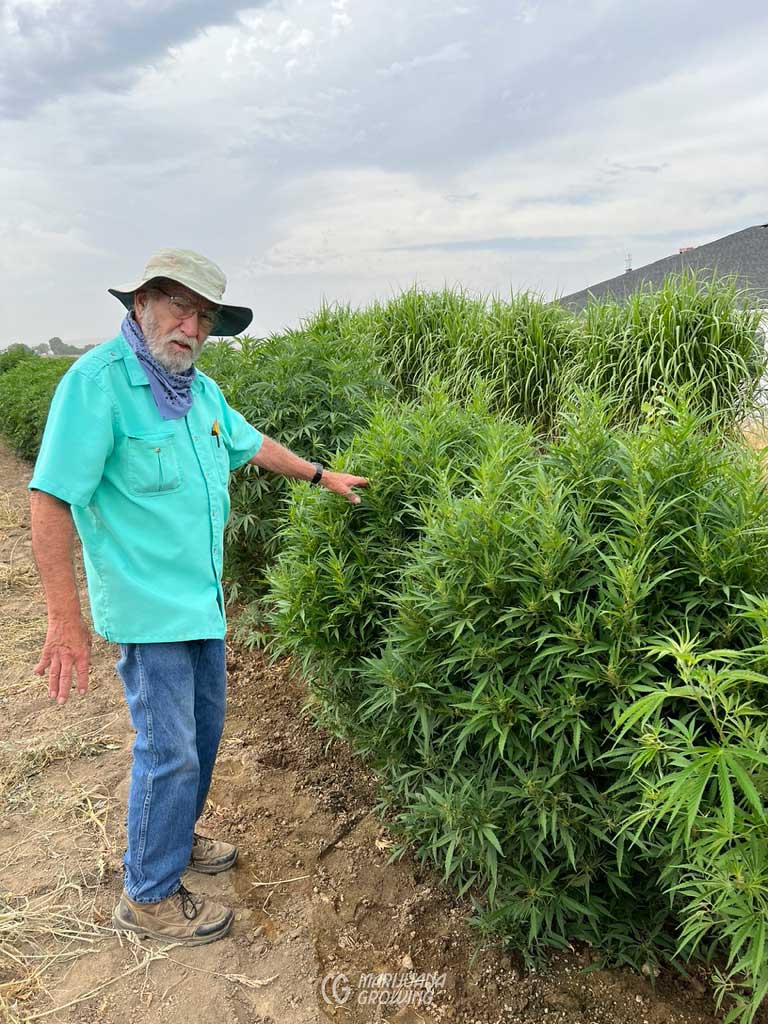
Clint Shock, PhD, professor emeritus, Oregon State University, shows CBD-rich budding auto-flower cannabis plants that he developed. Clint is one of the few professional, well-educated breeders with a lifetime of experience that have entered the cannabis arena.
Super-autos are bred by crossing a c. sativa-dominant variety with a c. ruderalis cultivar. Others cross C. indicadominant varieties. C. ruderalis supplies the day-neutral traits and the c. sativa– or c. indica-dominant cross provides the balance of the traits including exponential growth habit, cannabinoid potency, and terpene levels. Super autos grow extraordinarily fast during their lifespan of 70-120+ days. Super-auto yields are often in excess of 150 grams in most climates. Super-autos are a breakthrough in selective cannabis breeding. Many breeders are working with super-autos.
Agricultural yields of day-neutral cannabis are often quoted as grams of biomass rather than dried flowers per plant. Or the yield per square meter is listed, with yields of up to 600 grams per square meter (m2). Cannabinoid potency readings are most often taken from dried flowers. Some auto-flower varieties can yield THC levels above 20%.
CBD-rich Varieties
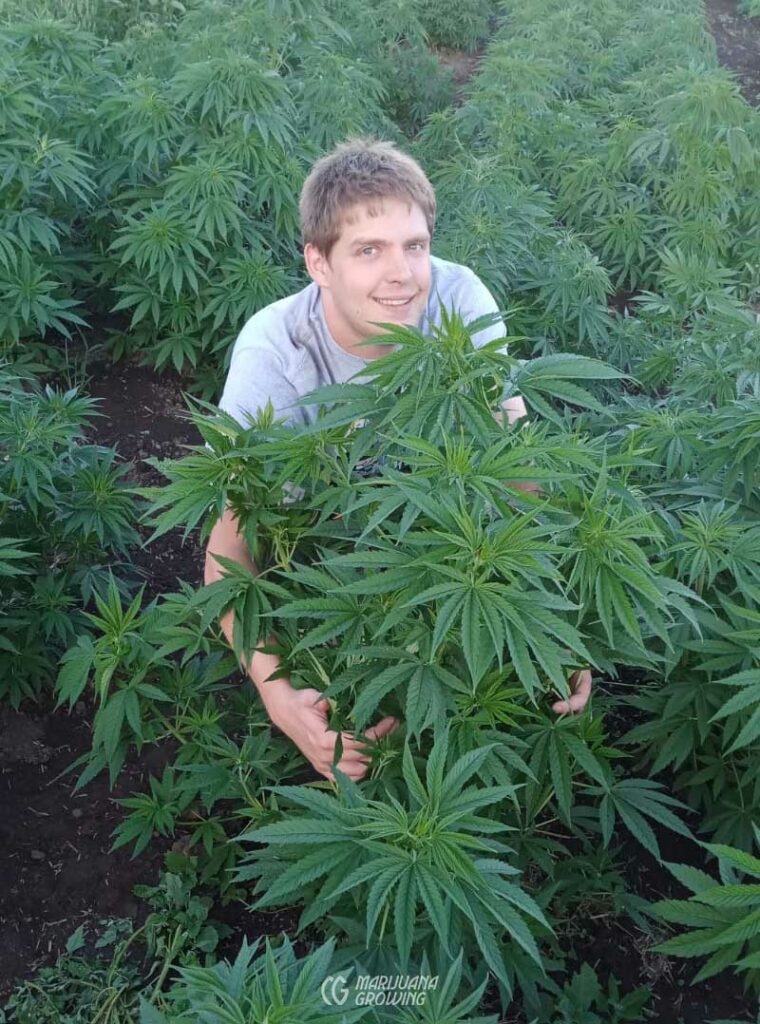
Ben Rogers from Singing Pig Farm, Inc. puts his arms around one of the CBD-rich cannabis plants he is growing.

CBD-rich varieties have medicinal qualities without the mindbending effects found in THC. CBD-rich cannabis effects are limited but increased when other cannabinoids including THC are combined. When incorporated with the entire range of cannabinoids and terpenes, an “Entourage Effect” occurs.
The first CBD-rich varieties include ´Cannatonic´ and ´Sour Tsunami´. These strong, stable varieties with dominant CBD-rich traits form the building blocks for many of the cultivars available today. They are landmark varieties, but far from unique. Back in the late 1970s, a few volunteer CBD-rich marijuana plants sprouted in a friend’s backyard. He asked me to help cultivate them. We harvested the plants and dried the flowers. We smoked and smoked but never got high. We called it “no-high dope.” Little did I know at the time, that this was my first experience with CBD-rich cannabis. Similar stories have surfaced during my fourdecade- long career.
About one out of 500 flower samples brought into California cannabis testing labs in the early 2010s had high levels of CBD. During the last 10 years many, many CBD-rich varieties have appeared on the market. Some seeds are produced by bona fide scientific seed breeders, and many are sold by pollen-chucking “breeders.” Unstable seeds are usually adequate for home gardeners. But, unless accompanied by a complete written analysis of genetic stability, these “unique” varieties are generally unstable, susceptible to diseases and pests, and lack the growth habit and biomass required for economical large-scale agricultural production.
True F1 hybrids are being produced by a few US seed companies. Thanks to the 2018 US Farm Bill that defined hemp as cannabis with a THC content of less than 0.3%. Today several hundred thousand acres of CBD-rich cannabis are planted in the US annually. If growing commercially for resale, always purchase certified CBD-rich seed from a reputable company. Many seed companies produce CBD-rich seed that is unstable. This seed often fails a THC level field test inspection. The level of THC is too high. Phylos Bioscience offers AutoCBD™ and PhotoCBD™, a true vigorous F1 hybrid, short-season photosensitive variety for commercial CBD farmers. Phylos describes these varieties as low-touch, high-yield, and diseaseresistant auto-flower varieties for commercial-scale grows.
CBG-rich Varieties
Non-psychoactive cannabigerol (CBG) is at the forefront of cannabinoid breeding today. CBG is the nonacidic rendition of cannabigerolic acid. Cannabigerolic acid (CBGA) is the essential cannabinoid (precursor) that must be present to synthesize CBD and THC. CBGA is an essential building block to produce CBG, CBD and THC. Cannabis must produce massive quantities of CBGA so that it can produce large amounts of CBD and THC. Growers can grow CBG-rich plants without going beyond the THC barrier.
CBG has shown promise therapeutically for neuroinflammation, stress, Alzheimer’s, schizophrenia, Parkinson’s as well as glaucoma, and as an antibacterial.
CBG-rich varieties were released by Oregon CBD Seeds in 2021. Other seed breeders are following with seeds that will be available in 2021-2022. Professional breeders are working to develop more cannabinoid-specific varieties. The new varieties enjoy high ratios of CBG with very low levels of THC and CBD. The high CBG varieties have a typical range of CBG: THC of 80-100:1 vs 25-50:1 CBD: THC. The price of CBG-rich cannabis fluctuates.
THC-rich Varieties
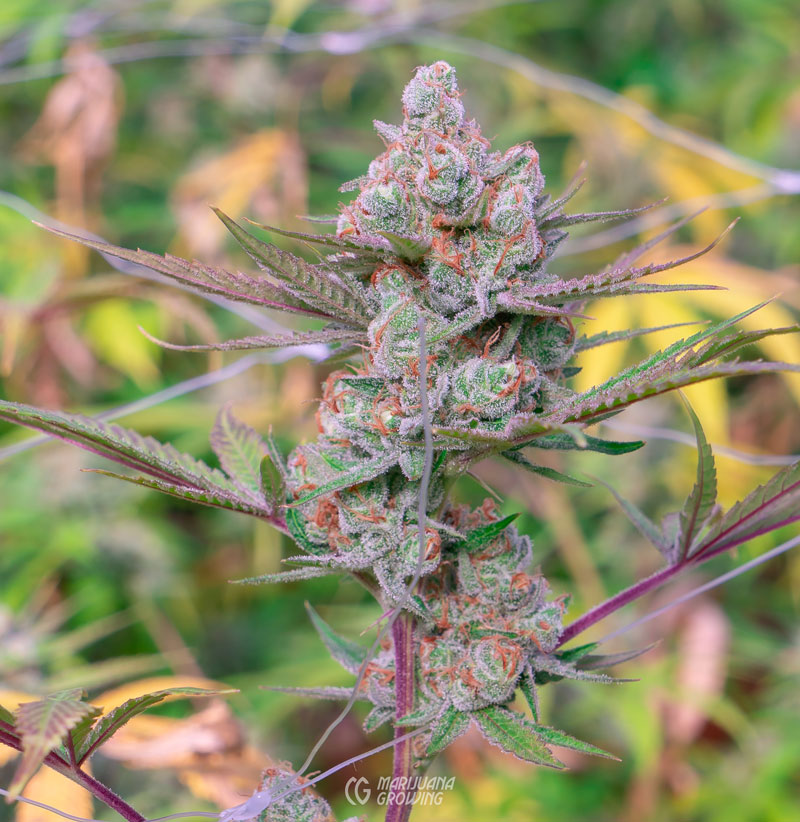
Tangie is a very popular cannabis variety in California and Europe too. There are several different versions of Tangie available. My favorite is heavy on Sativa genetics.
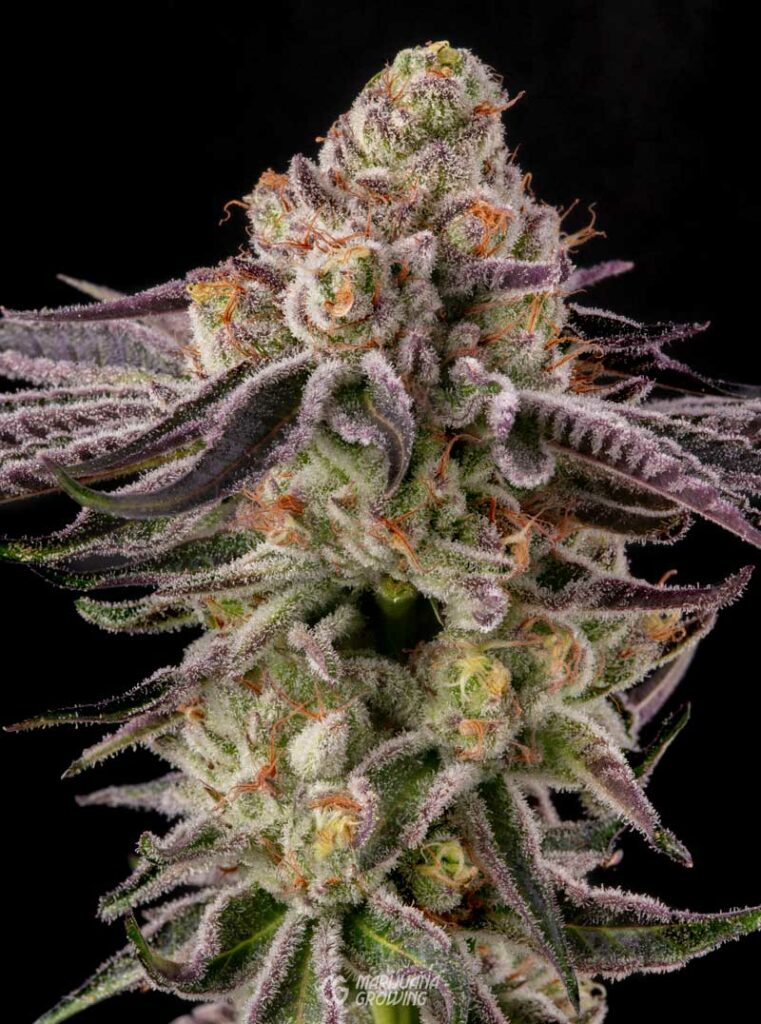
Wedding-Crasher is a good example of a high THC, low CBD plant that grows well indoors and in greenhouses.
THC-rich “varieties” are available from hundreds of seed purveyors. Study their offerings carefully to ensure the varieties grow well in your climate and growing conditions. Some cultivars were bred to grow indoors, others outdoors and varieties grow best in a greenhouse.
Most of the varieties are loaded with THC-rich cannabinoids and grow well indoors, outdoors, and in greenhouses. Many of these offerings are not genetically stable. See the discussion above under “Cannabis Varieties” for more background information.
You can find many of these varieties by making the following internet searches, “cannabis seeds”, “CBD cannabis seeds” and “THC cannabis seeds.” “Autoflower seeds” “super-auto cannabis”
Industrial Hemp
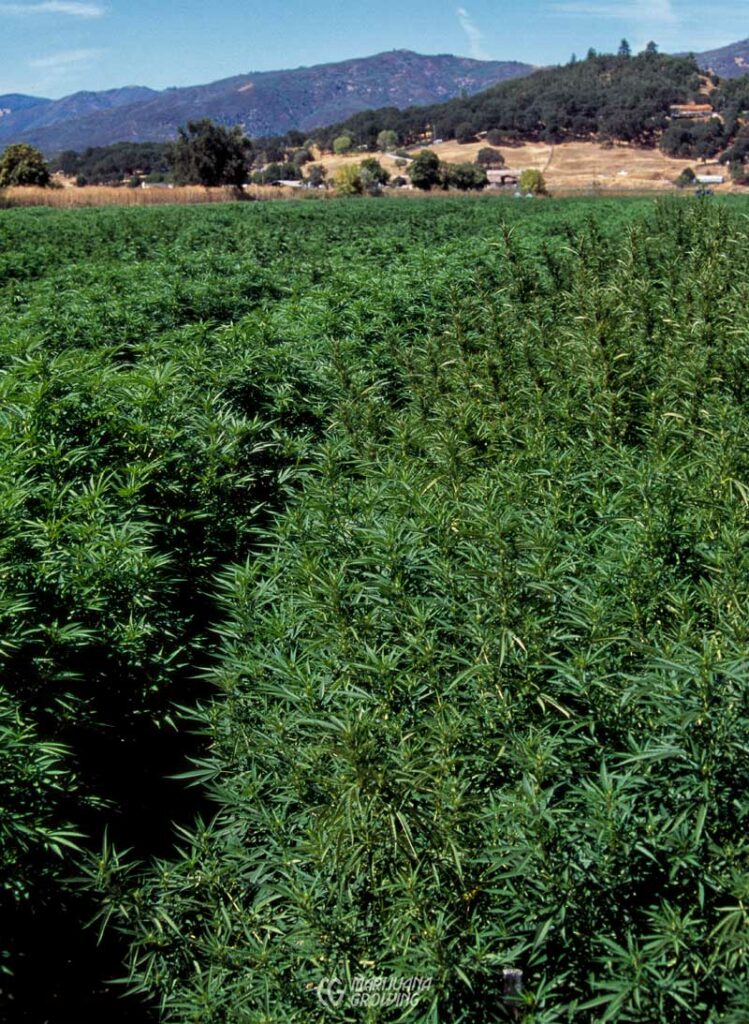
Industrial hemp is C. sativa. The tall stemmy varieties produce little foliage and the longest fibers that have a wide range of industrial uses. Hemp, affectionately referred to as “rope” and drug cannabis as “dope,” is often seeded and contains extremely low levels of THC and often high amounts of CBD.
Industrial hemp is defined in most countries as cannabis that contains less than 0.3% THC. Legal industrial hemp is gaining popularity but has a long way to go before becoming a viable commercial crop. Versatile, durable, and sustainable, hemp can be used to make biofuel, paper, rope, cloth, food, medicine, etc. According to the US Congressional Research Service, some 25,000 products are made from industrial hemp. Industrial hemp was used until synthetic substitutes such as nylon, rayon, etc., were developed.
CBD-rich cannabis seed certified in the US must pass a THC compliance test. Testing programs are administered by individual states. Although individual state compliance programs differ, all must comply with federal USDA rules. Certified hemp seed must be purchased from official European Union certified sources or the end product cannot be legally sold.
Cannabis Botany
| THC Cannabis | Male | Female | Seeds | Female Clone |
| Regular | X | X | X | X |
| Feminized | O | X | X | X |
| Auto-flower | X | X | X | O |
| Auto-flower Fem | O | X | X | O |
| CBD Cannabis | Male | Female | Seeds | Female Clone |
| Regular | X | X | X | X |
| Feminized | O | X | X | X |
| Auto-flower | X | X | X | O |
| Auto-flower Fem | O | X | X | O |
| Industrial Hemp | X | X | X | X |
When you look at this chart remember that the autoflowering genes work like an on/off switch. The switch is “on” in auto-flower mode and photoperiod mode is turned “off”. The auto-flowering genes turns on the “daylight neutral” switch so that plants start flowering after three weeks of growth regardless of the hours of light and darkness they receive. If the auto-flower is crossed with a (photoperiod) parent that takes 8 weeks to complete flowering, auto-flower plants should become ripe in 77 days, 11 weeks (3 weeks vegetative, 8 weeks flowering). If the auto-flower is crossed with a (photoperiod) parent that takes 12 weeks to complete flowering, the auto-flower plant will become ripe in 105 days, 15 weeks (3 weeks vegetative, 8 weeks flowering).
Growth Habit
New hybrid varieties can grow into several shapes. Dominant single flower forms on the central stem and several (4 8) lower branches develop fat flowers while smaller branches yield small flowers.
Hermaphrodites and Weird Cannabis Plants
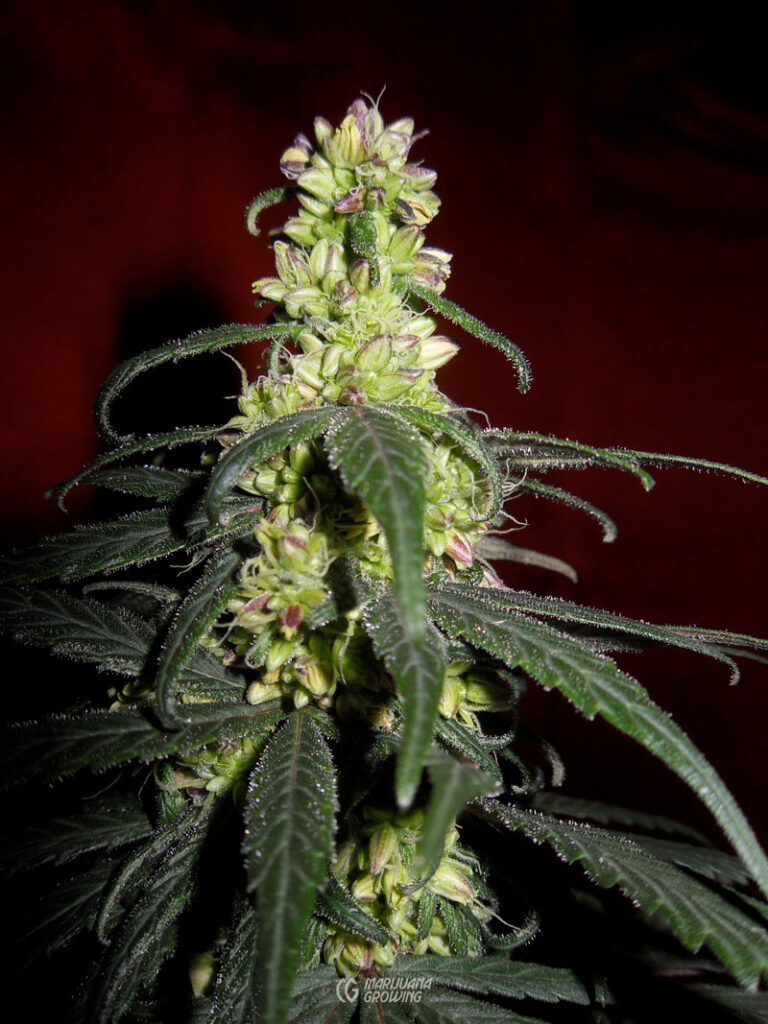
This intersex plant is full on! It is packed with both male and female flowers. Seldom do growers let intersex plants advance to the stage where they can shed pollen to fertilize nearby flowering females.
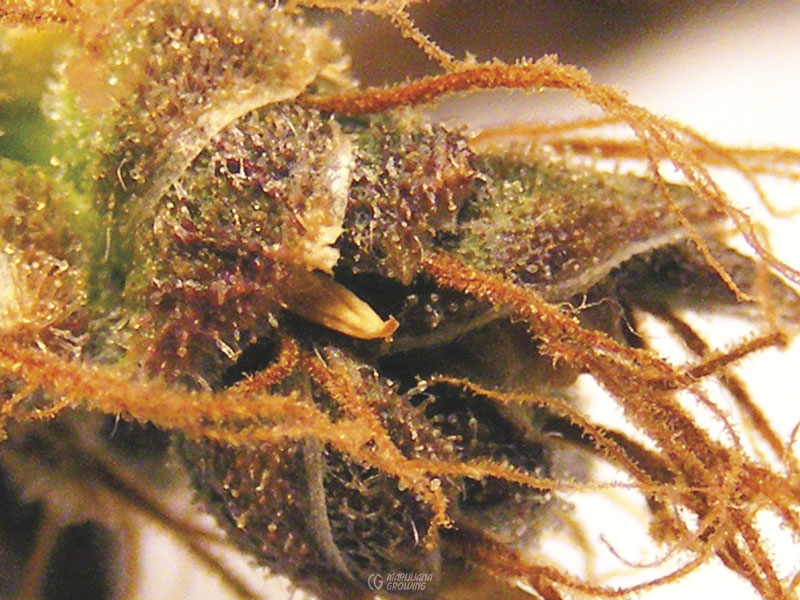
Intersex plants inherit genes that trigger both male and female flowers on the same plant. Environmental stress promotes more pronounced intersex characteristics in plants. However, intersexuality is the product of genetics and is passed on from one generation to the next. Cannabis can demonstrate a high or a low degree of intersexuality. The ratio of male to female flowers varies according to genetic makeup. In some cases, intersexuality is very pronounced; many male and female flowers grow on the same plant. Other times just a few male flowers grow on a predominantly female plant. A few male flowers on an intersex plant are difficult to find. A single intersex male flower can pollinate female flowers and produce many, many seeds. Intersex plants are very, very poor choices for a breeding program. Intersex plants are often called by the misnomer “hermaphrodite.”
Weird split leaves on Freakshow

Freakshow grows the strangest, most bizarre, shaped leaves! They remind me of a crinkled fern leaf. The breeder, Shapeshifter, who created Freakshow grew the plants from a couple of seeds he acquired. The foliage on the two mutants fascinated Shapeshifter. He backcrossed the mutant plants for several generations. He selected for the mutant leaf trait, developing a relatively stable line over time. Nice uplifting cerebral effect with more than 18% THC content. Humboldt Seed Company offers seeds, and Dark Heart Nursery now offers clones.


